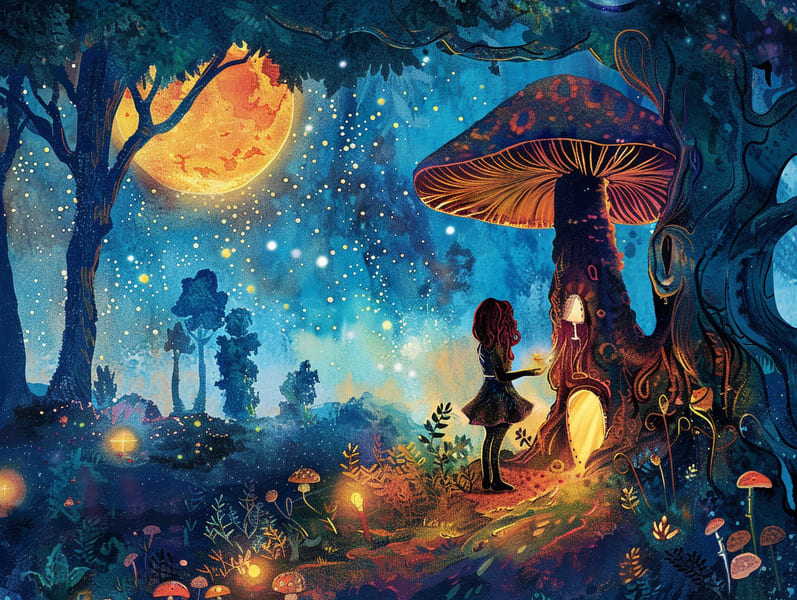The Genesis of Bedtime Fairy Tales and the Endless Mystique.
The Genesis of Bedtime Fairy Tales and the Endless Mystique.
Blog Article

Legendary fairy tales have long histories. These tales have been conveyed from one generation to the next ages before they were ever documented. They sprang from a variety of societies, including Eastern traditions. They were initially conveyed among grown-ups, often carrying themes and messages aligned with the societal norms and beliefs of the time.
The Grimm brothers, Jacob and Wilhelm, were among the first to collect many of these beloved stories. Their anthology, "Grimm's Folk Tales," included narratives like "The Little Glass Slipper," "Hansel and Grethel," and "Snow-White and Rose-Red," which have since become staples in the world of iconic fairy tales. Similarly, Hans Christian Andersen's enchanting fairy tales, such as "The Little Mermaid," and "The Ugly Duckling," have captivated hearts worldwide, cementing their place in the pantheon of iconic fairy tales.
Though they are old, these tales remain as significant as ever, especially as kids' bedtime tales. These enchanting tales are now available in multiple formats, including beautifully illustrated books, captivating animations, and free fairy tales online.
Their ongoing significance can be credited to several enchanting factors:
Vital Lessons: Ancient fairy tales often impart important moral lessons. Narratives like "The Tale of the Boy Who Cried Wolf" teach the virtue of being truthful, while "The Tale of the Tortoise and the Hare" demonstrate the virtues of steadfastness and unassuming nature. These stories offer the young clear distinctions between moral and immoral, building their moral compass in a mild yet deep way.
Compassion and Insight: Timeless fairy tales frequently portray figures facing problems and hurdles, fostering young listeners to comprehend with their struggles and back their triumphs. For instance, "Beauty's Beast" points out the value of valuing inner qualities to understand the real person of a individual, promoting warmth and insight.
Cultural Appreciation: Many old fairy tales are rooted in the cultural contexts from which they developed. Learning from these narratives can provide delightful insights into different beliefs, nurturing a sense of world respect and acknowledgment.
Creativity and Fantasy: The whimsical elements in timeless fairy tales—enchanted objects—trigger children’s fantasy worlds. These stories bring readers to mythical realms, provoking fantasy dreams and a sense of wonder that lasts a lifetime.
Traditional fairy tales are not only charming but also educational. They serve as mesmerizing tools in enhancing various cognitive and emotional skills in young readers. When traditional fairy tales are spoken, they nurture speaking abilities by showing new language items and complicated sentence structures. This practice also promotes hearing perception and focus, as children focus on every detail, expectant to see what happens next.
Furthermore, deliberating the themes and characters of traditional fairy tales can foster logical thinking and problem-solving abilities. Little ones are taught to pinpoint patterns, foresee events, and make sense of cause and effect. These contemplations also promote little ones convey their thoughts and feelings, boosting their emotional intelligence.
In today’s online age, the presence of digital storybooks has made these stories more attainable than ever. Web platforms and web apps present broad selections of traditional fairy tales that can be read or played anytime, anywhere. Fairy tales recited are particularly liked, extending an delightful method for little ones to delight in these charming stories. Audiobooks and read-to-me videos carry characters and settings to life, often supplemented by captivating soundtracks and instrumentals that augment the tale journey.
The persistent attraction of traditional fairy tales lies in their ability to alter to present days while preserving their core messages. Contemporary adaptations of these fairy tales often highlight more different characters and this site modern settings, making them understandable to today’s audience. However, the fundamental themes of braveness, kindheartedness, and honesty remain unchanged, continuing to resonate with young readers of all ages.
Timeless fairy tales also offer a sense of reassurance and closeness. They present a well-structured narrative with a unmistakable beginning, middle, and end, often winding up with the solving of conflicts and the triumph of good over bad. This dependability can be encouraging for kids, providing a sense of unwaveringness in an unstable world.
Traditional fairy tales continue to mesmerize and coach new generations, maintaining their magic and significance in modern society. As kids' bedtime tales, they showcase a perfect blend of wonder and wisdom, facilitating moral values, empathy, and creativity. The availability of digital storybooks and the likability of fairy tales recited promise that these ancient tales remain available to new generations.
By keeping and narrating these narratives, we continue to laud the rich tapestry of myths and cultural heritage. Whether you are enjoying a gorgeously illustrated book, browsing a internet collection, or listening on an audio story, the grandeur of bedtime fairy tales is always within reach. These fairy tales highlight of the unending nature of stories and its ability to hold us together across eras and regions.
No matter if you are experiencing a colorful picture book, accessing a electronic collection, or listening on an audiobook, the majesty of old fairy tales is always within reach.
These tales demonstrate of the lasting strength of storytelling and its ability to unite us across eras and regions, weaving a spell that delights and instructs alike.